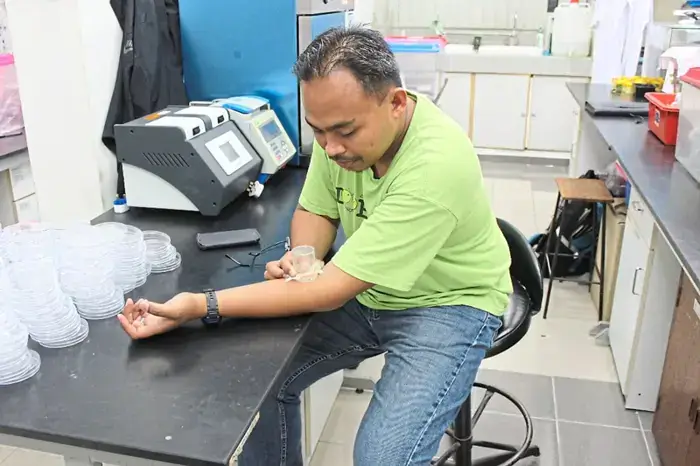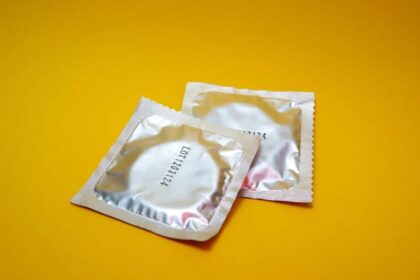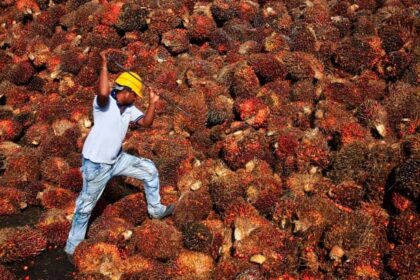Bed Bugs: From Nuisance to Forensic Tool
Bed bugs are notorious for their itchy bites and stubborn infestations in homes, hotels, and public spaces. Yet, recent scientific breakthroughs in Malaysia have revealed a surprising new role for these blood-sucking insects: as potential forensic evidence in criminal investigations. Researchers at Universiti Sains Malaysia (USM) have demonstrated that tropical bed bugs (Cimex hemipterus) can retain human DNA in their guts for up to 45 days after feeding, opening up new avenues for crime scene analysis when traditional evidence is absent or compromised.
- Bed Bugs: From Nuisance to Forensic Tool
- How Bed Bugs Became Forensic Evidence
- Why Bed Bugs Are Uniquely Suited for Forensic Work
- From the Lab to the Field: Practical Protocols for Crime Scenes
- Limitations and Challenges: Mixed DNA and Legal Hurdles
- Scientific Context: Bed Bugs and Forensic Entomology
- Genetic Techniques: STR and SNP Analysis Explained
- Broader Implications: A New Frontier in Forensic Science
- In Summary
This discovery, published in leading scientific journals and highlighted by international news outlets, marks the first documented forensic application involving this tropical species. The implications are significant, especially in regions where C. hemipterus is prevalent and where conventional biological evidence may be missing or deliberately removed.
How Bed Bugs Became Forensic Evidence
The journey began in 2014, when USM scientists collected bed bug specimens from cushioned seats at Kuala Lumpur International Airport. Over the next decade, entomologist Abdul Hafiz Ab Majid and his team, including postdoctoral researcher Lim Li, meticulously studied the insects’ ability to preserve human DNA after feeding. Their research focused on two main genetic profiling techniques: Short Tandem Repeat (STR) analysis and Single Nucleotide Polymorphism (SNP) analysis, both standard methods in forensic science for identifying individuals and predicting physical traits.
In controlled laboratory conditions, bed bugs were allowed to feed on human volunteers. The researchers then extracted DNA from the bugs at various intervals—immediately after feeding, and at 5, 14, 30, and 45 days post-feeding. The results were striking: complete human DNA profiles could be recovered right after feeding, and partial profiles—sometimes sufficient to predict hair, skin, and eye color—were still obtainable up to 45 days later.
Associate Professor Hafiz explained the significance of these findings:
“Right after feeding, we could recover full genetic profiles using STR and SNP methods. And even 45 days later, we were still able to retrieve partial profiles—enough, in some cases, to point to hair, skin and eye colour.”
These techniques are the same as those used in forensic laboratories worldwide, underscoring the potential for bed bug-derived DNA to supplement or even replace traditional evidence in certain scenarios.
Why Bed Bugs Are Uniquely Suited for Forensic Work
Bed bugs possess several biological traits that make them particularly valuable in forensic investigations:
- Obligate Blood Feeders: All life stages of bed bugs, from nymphs to adults, require blood meals to grow and reproduce. This means they are likely to have fed on humans present at a given location.
- Limited Mobility: Unlike mosquitoes or flies, bed bugs are wingless and do not travel far from their feeding sites. After feeding, they retreat into nearby crevices, making it likely that the DNA they carry belongs to someone who was recently at that specific location.
- Long DNA Retention: Bed bugs can retain human DNA in their digestive systems for weeks, far longer than other blood-feeding insects. For example, human DNA in mosquito blood meals typically degrades within 26 hours, whereas bed bugs preserve it for up to 45 days.
- Resurgence of Infestations: The global increase in bed bug infestations, especially in urban and travel hubs, raises the likelihood of encountering these insects at crime scenes.
These characteristics make bed bugs a unique and reliable source of human DNA, especially in environments where other evidence may be absent or destroyed.
From the Lab to the Field: Practical Protocols for Crime Scenes
Building on their laboratory success, the USM team developed a practical field protocol for collecting and analyzing bed bugs as forensic evidence. This protocol, published in Forensic Science International, outlines steps for preserving, sterilizing, and extracting DNA from bed bugs found at crime scenes.
Key elements of the protocol include:
- Collecting bed bugs from infested sites, regardless of whether they are alive or dead, male or female.
- Preserving specimens in 70% ethanol and storing them at -20°C to prevent DNA degradation.
- Surface sterilizing each bug to remove external contaminants before DNA extraction.
- Using STR analysis to generate genetic profiles from the extracted DNA.
Field tests in Penang, Malaysia, confirmed the method’s effectiveness. Most samples yielded sufficient human DNA for partial or complete STR profiling, even when collected from real-world environments rather than controlled laboratory settings.
Limitations and Challenges: Mixed DNA and Legal Hurdles
While the findings are promising, several challenges remain before bed bug-derived DNA can be routinely used in court:
- Mixed DNA Profiles: Bed bugs may feed on more than one person, resulting in mixed DNA profiles that can complicate interpretation. In field samples, researchers often detected more than two alleles at certain genetic loci, indicating multiple human sources.
- DNA Degradation: The completeness of DNA profiles decreases over time due to digestive processes within the bed bug. While partial profiles can still provide valuable leads, they may not always meet the stringent requirements for legal admissibility.
- Technical Protocols: The current research used single-target polymerase chain reaction (PCR) tests, which are slower and less efficient than the multiplex kits used in accredited forensic laboratories. For widespread adoption, protocols must be standardized and validated across different systems.
- Legal Acceptance: For bed bug DNA evidence to be admissible in court, it must undergo rigorous validation and acceptance by the forensic and legal communities. This process is ongoing, with the USM team actively collaborating with forensic experts to refine their methods.
Despite these hurdles, experts believe that bed bug-derived DNA could offer crucial leads in complex investigations, especially when other evidence is lacking. Mohamad Anil Shah Abdullah, chairman of the Penang Crime Consciousness and Public Safety Society, noted:
“Sometimes, there’s no blood or fluids at the scene. Insects like flies and mosquitoes have been used before but bed bugs don’t fly. That makes them useful.”
He also referenced a 2008 case in Finland where police retrieved a suspect’s DNA from a mosquito found in a stolen car, suggesting that bed bugs could play a similar role in future investigations.
Scientific Context: Bed Bugs and Forensic Entomology
Forensic entomology—the use of insects in criminal investigations—has traditionally focused on species like flies and beetles to estimate time of death or locate remains. The use of blood-feeding insects for human DNA recovery is a newer development, with mosquitoes and lice previously studied for their potential to retain genetic material from their hosts.
However, bed bugs offer distinct advantages. Unlike mosquitoes, where only females feed on blood and DNA degrades rapidly, all bed bug life stages feed on blood and retain it for much longer. Their tendency to remain close to their feeding sites also increases the likelihood that the DNA they carry is relevant to the crime scene.
The USM team’s research is the first to focus on Cimex hemipterus, the tropical bed bug species common in Southeast Asia, Africa, and parts of South America. Previous forensic studies had concentrated on Cimex lectularius, the common bed bug found in temperate regions. The expansion of bed bug research to tropical species reflects the global spread of infestations and the need for region-specific forensic tools.
Genetic Techniques: STR and SNP Analysis Explained
Understanding the science behind the research requires a brief explanation of the genetic techniques involved:
- Short Tandem Repeat (STR) Analysis: STRs are repeating sequences of DNA that vary greatly among individuals. By analyzing multiple STR loci, forensic scientists can generate a genetic profile unique to each person. This method is the gold standard for human identification in forensic labs worldwide.
- Single Nucleotide Polymorphism (SNP) Analysis: SNPs are single-letter changes in the DNA sequence. Certain SNPs are associated with physical traits like hair, eye, and skin color. SNP analysis can supplement STR profiling, especially when DNA is degraded or incomplete, and can provide investigative leads about a person’s appearance or ancestry.
In the USM studies, both STR and SNP analyses were performed on DNA extracted from bed bugs. Complete profiles were possible immediately after feeding, while partial profiles—sometimes sufficient for phenotype prediction—were still obtainable weeks later. The HIrisPlex-S system, a web-based tool, was used to predict physical traits from SNP data, with results matching the known characteristics of the human volunteers used in the experiments.
Broader Implications: A New Frontier in Forensic Science
The ability to recover human DNA from bed bugs has far-reaching implications for forensic science and criminal investigations:
- Alternative Evidence Source: In cases where bloodstains, fingerprints, or other biological evidence have been cleaned or are absent, bed bugs may provide a hidden reservoir of genetic material.
- Spatial and Temporal Clues: Because bed bugs do not travel far, the presence of human DNA in their guts can help establish who was present at a specific location and when.
- Potential for Cold Cases: The long retention time of DNA in bed bugs could aid in investigations where significant time has passed since the crime occurred.
- Global Relevance: As bed bug infestations rise worldwide, the forensic protocols developed in Malaysia could be adapted for use in other regions, especially where C. hemipterus is common.
However, the technique is not without its limitations. Mixed DNA profiles, technical challenges, and the need for legal validation mean that bed bug-derived evidence is not yet ready for routine courtroom use. Nonetheless, the research represents a significant step forward in the search for new forensic tools and highlights the importance of interdisciplinary collaboration between entomologists, geneticists, and law enforcement.
In Summary
- Malaysian scientists have demonstrated that tropical bed bugs can retain human DNA for up to 45 days after feeding, offering a new source of forensic evidence.
- Bed bugs’ biology—obligate blood feeding, limited mobility, and long DNA retention—makes them uniquely suited for crime scene investigations.
- STR and SNP analyses can generate complete or partial human genetic profiles from bed bug-derived DNA, sometimes sufficient to predict physical traits.
- Field protocols for collecting and analyzing bed bugs have been developed and tested in Malaysia, with promising results.
- Challenges remain, including mixed DNA profiles, technical limitations, and the need for legal validation before bed bug evidence can be used in court.
- The research opens new possibilities for forensic science, especially in cases where traditional evidence is lacking or compromised.












